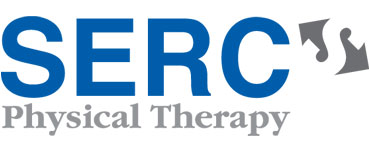What is Geriatric Therapy?
Geriatric Physical Therapy
Physical therapy for the geriatric population focuses on optimizing function for the aging adult. As we age, our bodies undergo wear and tear. Although this process is normal, it sometimes leads to pain and disability, causing patients to limit their activity or stop doing what they enjoy. Geriatric physical therapy has been found effective in improving strength, mobility and balance to help the aging individual build confidence in staying active. There are many reasons to consult your doctor about the benefits of physical therapy.
Geriatric Speech Therapy
As we age, normal changes can also occur with speech, language, memory and swallowing. In addition, some diseases such as stroke, Parkinson’s or dementia can also cause disorders related to these tasks. A speech language pathologist (SLP) can play an important role in addressing these changes whether related to the normal process of aging as well as disorders related to disease.
Benefits
Geriatric Physical Therapy
Treatment will focus on a patient’s specific goals. Research shows that individual treatment programs can help restore mobility, reduce pain, increase strength and improve fitness levels.
Geriatric Speech Therapy
A SLP (speech language pathologist) will design a program that is specific to your needs and goals. This may include exercises for breathing and swallowing, or strategies to assist with memory and attention.
Common Diagnoses
Geriatric conditions treated with physical therapy include, but are not limited to:
- Osteoarthritis and rheumatoid arthritis
- Osteopenia and osteoporosis
- Cancer-related complications
- Alzheimer’s disease
- Joint replacement and other orthopaedic surgeries
- Neurologic disorders; Stroke, Parkinson’s, Multiple Sclerosis, Vestibular and Balance disorders
- Complications related to obesity
- Generalized weakness and loss of function
Geriatric conditions treated by speech language pathologists include:
- Aphasia
- Dementia
- Swallowing
- Communication disorders
*Services are not available at all locations. Call or click the location page near you for that center’s services.
Back Pain
Learn MoreChronic Pain
Learn MoreGeneral Weakness
Learn MoreHand & Wrist Pain
Learn MorePre/Post-Surgical
Learn MoreVertigo
Learn MoreWhat to Expect
Every patient has a unique health history, diagnosis and personal goals. When you come for your first appointment, we will create a personalized treatment plan for you.
We work with most major insurance providers and do our best to help keep the paperwork pain-free. If you’d like to confirm your insurance coverage, please let us know and we can verify when you schedule. If your insurance provider requires a co-pay, we will ask for this payment at each visit. We accept payments by cash, check or credit card.
When to Arrive
On average, a patient’s first visit lasts about an hour. We typically ask patients to arrive 15 minutes early to sign-in, complete paperwork and/or change clothes.
What to Bring
On your first visit, you’ll need to bring your physician referral or prescription (if needed), your insurance card, your primary registration forms, your ID or driver’s license and your co-payment (as applicable). If desired, you may bring a change of clothing.
How it Works
During your first visit, your physical therapist will do an initial evaluation and discuss your plan of care. The therapist uses this information to set goals for your continued treatment. Physical therapy goals may include improved movement, strength, endurance and flexibility, as well as decreased pain. Your subsequent visits will focus on treatment that is based on your diagnosis and individualized goals.

